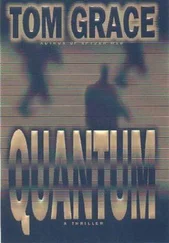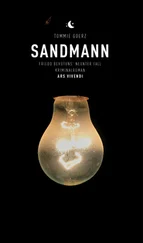‘Put the rest of our gear on board while I take care of the men,’ Duroc ordered.
Albret nodded and jogged away as Duroc walked over to the largest tent in the compound. Inside, he found the five Hondurans laughing and enjoying the cold beer Duroc had provided. All eyes turned to him as he entered the tent.
‘Gentlemen,’ Duroc said, easily slipping into Spanish, ‘I wish to thank you for your excellent work over these past few days. As we agreed, here is five hundred thousand dollars in U.S. currency.’ Duroc set the briefcase down atop the table where the men were seated and opened it so the contents faced the men. Inside, the case was filled with neat bundles of U.S. twenty-dollar bills. ‘It has been a pleasure doing business with you.’
Duroc shook a few hands and the rest of the Hondurans raised their bottles in his honor. One of the men picked up a battered guitar and began strumming – they were rich and it was time to celebrate. Duroc smiled and left what promised to be a wild day of drinking.
By the time Duroc returned to the helicopter, Albret had their gear loaded and the rotors turning. Duroc slipped on a pair of dark aviator sunglasses and climbed into the copilot’s seat. Albret ran through the rest of his checklist, powered up the twin turbine engines, and lifted off.
As the helicopter rose above the treetops and began to move away from the runway, Duroc keyed a command into the onboard computer that instructed it to transmit a series of pulses at a specific frequency. Less than two seconds later, a thin layer of plastic explosive lining the interior of the briefcase exploded.
The five men barely felt the searing heat from the blast or the shards of fragmented metal from the briefcase. Everything within fifty feet of the bomb disappeared in a fireball that incinerated the encampment. The explosion left a crater twenty feet across and ten feet deep.
Duroc’s helicopter sped over the rain forest toward Tegucigalpa, where he and Albret would board a private jet for Argentina.
2 JANUARY 24 LV Research Station, Antarctica
Collins stood beneath a clear blue sky bathed in the whitest light he had ever known, a light blinding with brilliant intensity. The hard-packed crystals of ice that covered the glacial plateau glowed in dazzling imitation of the sun. Were it not for the yellow-lens goggles protecting his eyes, he would have been snow-blind as soon as he stepped outside the station. From his vantage point, less than seven hundred miles from the South Pole, the sun traced another unbroken ellipse in the sky. Endless day.
Click.
Ansel Adams could’ve worked some real magic down here, Collins mused as he adjusted the exposure setting on his camera.
Today, the wind, temperature, and sky conspired to produce one of nature’s rarest and most dazzling sights: parhelic circles. Sunlight, refracted through tiny airborne ice crystals, created the illusion of luminous halos, arcs,and flaring parabolas in the sky. Collins counted twenty distinct formations dancing around the sun.
Click.
Like a surrealist painting, distance was an illusion in the interior of the southernmost continent. It was generally accepted that the otherworldliness of this place was due in equal parts to extremes in temperature, altitude, and lifelessness. Over fifty years of record keeping by Russian crews manning the Vostok Research Station – Collins’s closest neighbors some forty miles to the south – bracketed the local temperature range as between-40 degrees and-128 degrees Fahrenheit.
Satisfied that he’d captured at least one decent image from this spot, Collins moved his camera around to the opposite side of the station. LV Research Station had been home to Collins and his wife, Nedra, since November and had been entirely prefabricated in the U.S. as a mockup of the habitat for NASA’s manned-mission to Mars. At the center of the station stood a short domed tower. Four cylindrical modules – each the size of a railroad tanker car – stood mounted on thick legs and radiated out from the tower in a cruciform configuration. The modules provided space for research, crew quarters, power and environmental systems, and storage.
Beneath LV Station, the sheet of glacial ice that blanketed nearly all of Antarctica rose to a height of 11,500 feet above sea level. Thanks to the katabatic winds – dense sheets of frigid air that flowed down from the nearby ice domes – the rarified air that Collins breathed was even thinner than that of other sites of equal elevation around the world. These winds siphoned low-oxygen air from the upper atmosphere to fill the void left behind as they flowed down toward the coast. When they had first arrived here, it took Collins and his wife several days to acclimate themselves, and both still had to be wary of overexertion.
Collins could attest to the extremes in temperature and altitude, but assumption that this place was totally lifeless was something that he and many other scientists around the world were challenging. Until the latter part of the twentieth century, energy in the form of sunlight was assumed to be essential to the formation of life, but then life was found in the darkest depths of the oceans. When communities of organisms were discovered not merely living but thriving in the superheated mineral-saturated waters of geysers and hydrothermal vents, environments lethal to most other forms of life on earth, scientists were forced to rethink their assumptions about the conditions that might give rise to life. Being more tenacious than anyone had previously considered, life seems to need only three things to start: heat, minerals, and liquid water.
Walking past a row of thirty-inch in diameter metal spheres that contained liquid hydrogen for the station’s fuel cells, Collins approached the reason that NASA and a group of partner companies had financed this project. Fifty feet from the station stood a cobalt blue tetrahedron that was as out of place atop the glacial ice of Antarctica as Arthur C. Clarke’s monolith on the moon: the Ice Pick probe.
Collins shortened the legs on his tripod, lowering the camera to capture both the hard lines of the probe’s first stage and the luminous parhelic circles. Satisfied with the composition, he adjusted the exposure setting and snapped another picture.
‘Hey, Philip, how’s the show?’ Nedra asked, her voice clear over his headset.
‘Amazing. You should come out and see it.’
‘I snuck a peek out the window. Just wanted to let you know we’re ready for another dip in the lake.’
Far beneath LV Station, sandwiched between a glacier and the rocky surface of Antarctica, lay one of the largest lakes on Earth – a body of liquid water that could have easily been seen from space were it not concealed by the ice. When British and Russian scientists confirmed the existence of Lake Vostok in 1996, they theorized that heat rising from the earth’s interior through rifts in the crust kept the water from freezing. Seismic activity in the area increased the likelihood of hydrothermal vents in Lake Vostok, meaning that the lake had the water, heat, and minerals necessary to support life. What form that life would take, in a place isolated from the rest of the world for the last 20 million years, was the subject of great speculation.
In 1610, Galileo pointed his telescope at Jupiter and discovered four moons orbiting the giant planet. This discovery came at a time when the whole of Western civilization believed that the earth was the center of the universe. News of Lake Vostok’s discovery and the possibility of life in its hidden waters coincided with the arrival at Jupiter of a spacecraft bearing the great astronomer’s name. During a fly-by of one of the moons discovered by Galileo – an ice-covered rock named Europa – the spacecraft transmitted a series of images as astounding to the scientists at NASA’s Jet Propulsion Laboratory as the discovery of the moon itself was to Galileo four hundred years earlier.
Читать дальше












